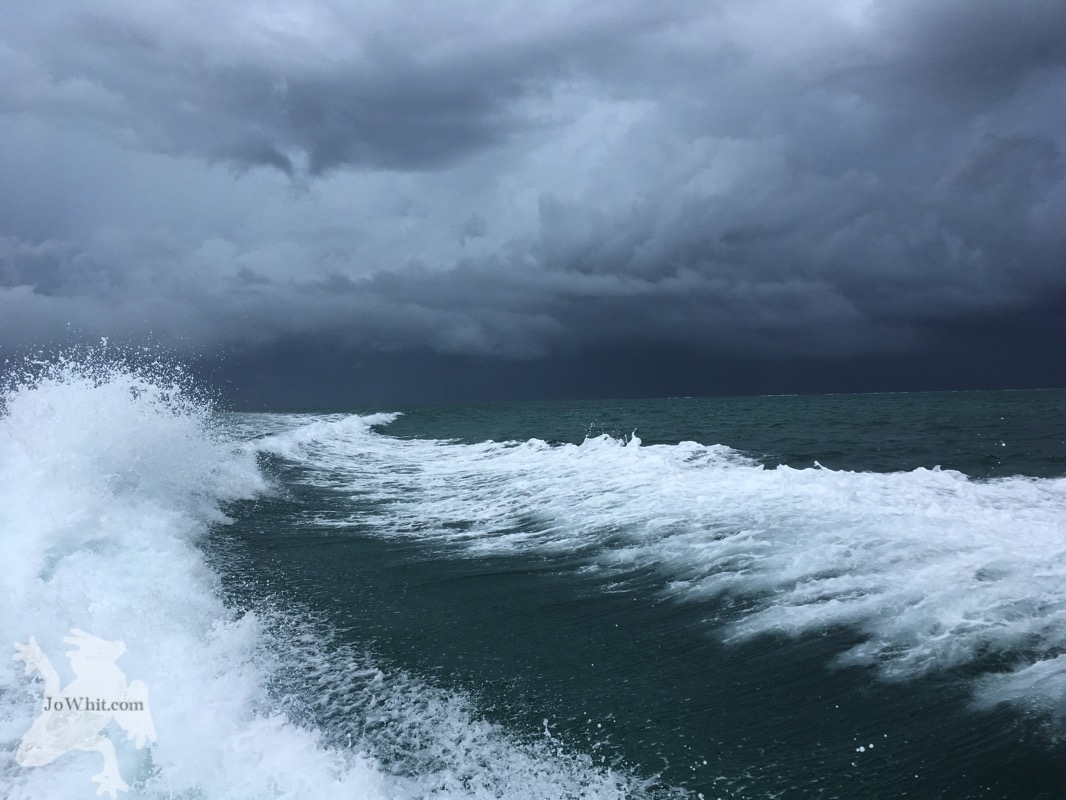
Caye Caulker is so hyped that I felt bad coming to the conclusion that it really wasn’t a place I wanted to revisit. I’ll try to explain.
A word about the sandbar itself. “Sandbar” is technically incorrect. It’s a limestone coral island populated by hermit crabs and a few hardy locals, who hide from the tourists and from the vendors, the vendors being the ones the tourists hide from. It’s an interesting ecosystem.
The main street is entirely populated with a succession of restaurants, trinket shops, and diving tours so after walking for about 2 minutes, you’ve pretty much seen all there is to see on main street. The food’s pretty good but it isn’t cheap, despite being mostly seafood…served on an island surrounded by an abundance of seafood. I have qualms about paying $10-17 for a single meal in any country, including my own, so I struggled a bit with the dollar signs on the menus. I had hoped this might be a place to find the elusive $1 iced coffee, but it was not so. All the coffee, though tasty, was set to Starbucks prices.
Come to think of it, the middle aged proprietor at the hostel had told us, shaking her head woefully, how the island had changed for the worse in the past few decades: too busy, too many golf carts, too expensive. I suppose she meant too many touts and too many tourists, but then, they were her source of income. Bemoaning the high prices for food, she directed us to her favorite lunch spot: a little shack about a 100 yards away that sold quesadillas for about $5.
That’s a tricky thing about tourism. The popularity of a place ebbs and flows over the years. The locals (and travelers themselves) complain when it becomes too crowded but when few visitors come, the shop owners complain.
In any event, Caye Caulker seemed like it had reached capacity and it’s only the second most popular island, Ambergris Caye being the number one resort spot off the coast of Belize.
The most popular place on Caye Caulker, appropriately named “the Split,” is where most people lay out to get sunburned. Of course, there is water access all around the island and there is sand everywhere but there really isn’t much sand by the water. Or rather, there is but it’s either hidden under a thick, foul smelling layer of seaweed or pinned up by a retaining wall. The seaweed is probably seasonal but in May, at least, it hangs off the island like a fringe.
That was the most surprising thing for me. I had expected the shoreline to look more like a beach than like a hedge dotted with fishing boats. There appeared to be a bit more sand touching water on the west side but none of it was public access as far as I could tell. The seaweed couldn’t obscure the nice sunsets, thankfully, but I hope that helps you see why the Split was so popular.
The name comes from short stretch of water between the southern and northern sections of the caye. So standing on the tip of the southern section, one can view the northern section, which isn’t populated by tourists. At least, it isn’t populated by tourists like us. Apparently it’s one of many places to invest in real estate or so said an overly friendly American chap with a giant beer belly who waddled up to brag about his investment choices. He raved about the market and predicted that it was going up up up. Then he decided to enlighten us about the weather patterns of Belize and assured us with the confidence of Elijah that it would not rain for another few weeks so we could rest easy.
It rained the next day.
No word yet on his investments but it seemed probable that if he doesn’t learn to ease up on the vacation lifestyle he might not be around to cash in all that appreciation.
The Split isn’t a beach exactly since the sand is kept on the island by a cement retaining wall. It seems to be owned by a restaurant, or at least all the chairs, tables, and shade are. There are even little shaded tables in the water of the only swimming area.
One can swim in the ocean, of course, but the current through The Split is determined to pull its occupants out to sea. In other words, it would make a nice treadmill pool.
I gave it a try myself. Once a small group of sting rays had lazily floated by, I hopped into the water on the northwest tip of the island and let the current pull me around the edge and into The Split. It would’ve kept pulling but with a little unladylike splashing I managed to paddle myself into the safety of the little swimming/splashing cove where several drunk people were watching the ocean.
Like I said before, the caye is so popular that I was disappointed that I was disappointed. But my sentiments were subtly affirmed by a tourist couple in a little fry jack shack on one of the back streets (cheapest eats we could find: $1.50 – $8.00). When I asked how they liked it, the lady kind of shrugged and said that the week they had allotted for the caye was really too much time. She was disappointed that she was disappointed too.
Make no mistake, I wasn’t going to waste my opportunity there. It’s just that we simply ran out of things to do very quickly, again, not being divers, or party-seekers, or fling-seekers.
That’s how travel goes. You go to a place to see what’s there and you don’t have to love what you find. But if you look a little more closely, odds are that you will find something.
Mom and I traipsed up and down the little, sandy streets in search of something interesting. To our relief, it did get more interesting than the shops and touts on main street. West of main street the shops give way to housing – mostly concrete two story affairs but there is plenty made from sea-warn wood. There were regular things: a school, a sandy soccer field, and a golf cart supplier. There were cargo docks on the west side at which, according to one guy, you could catch a boat over to the north section of the island for free – though he never mentioned how one would get back.
Whereas the northeast and center of the caye tended to be cluttered with hostels, the south and west sides had a predominance of little resorts and private residences. The streets were lined with little blue hermit crabs that ducked into their holes as we passed. There was a shabby little grocery store with boxes of cereal for $5 (everything is imported) and even a (American style) Chinese restaurant run by a Chinese lady who hardly spoke either English or Spanish as she ran a steady supply of Coronas to a rowdy table of Belizean men.
In the end, we retreated to the privacy of our new Airbnb, which was on the southern or quiet side, of the island. The little cluster of cabanas didn’t have a proper beach either but it did have a long dock that stretched out into peaceful, unmolested waters. We spent a good amount of time under the thatched roof at the end of the dock watching the waves and the cormorants and the occasional water taxi zip past. By the way, the shade of the roof was essential if one didn’t want to get fried. Word to the wise: don’t make the mistake of hanging out on a shadeless dock.
The Airbnb had snorkeling gear and kayaks which one could borrow too and James and I spent an hour or so battling the feisty ocean waves in a double ocean kayak.
That final accommodation worked out well. Without it, I suspect that the 2.5 days I had scheduled us to spend on the island would have been less enjoyable. To top it off, the pair of caretakers were friendly and even conversational, which is something I had been looking for the entire trip. The lady was from San Ignacio and if I recall correctly, also trying to get used to island life though they liked their work.
The American owners were also friendly, though less conversational or perhaps just less available. They seemed more focused on the business (I overheard the preamble to a phone conversation with some inspector. The owner preferred that the caretaker’s wife do the talking as she was apparently less likely to be cajoled into paying higher fees or trumped up taxes or whatever).
So caye life isn’t all beaches and coconuts; sometimes it’s seaweed and $5 coffees. In that case, just drop your expectations and start walking until you find something interesting.













